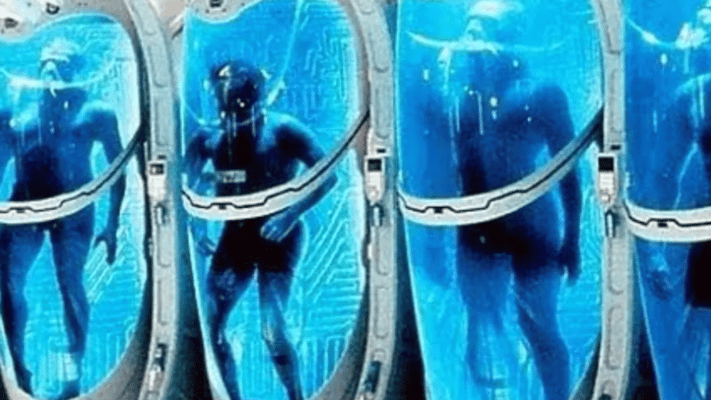Can We Freeze A Body And Bring It Back To Life?

Halfway between Sydney and Melbourne in the small town of Holbrook, there is a frozen body. It will probably be that way for a while.
The body of an 80-year-old man, who died in May, is the first in Australia to be frozen in the name of cryonics with the hope it will one day come back to life. It is upside down in a vacuum storage vessel and held at a temperature of about minus 200 degrees celsius. The facility is run by Southern Cryonics, which has been preparing for "Patient One" for more than 14 years, according to the ABC.
Cryonics has captured the imagination of filmmakers and novelists for decades, as well as the fortune of numerous tech billionaires. However, it turns out that the idea of successfully freezing a dead person and bringing them back to life is not much more than a hopeful experiment, according to Professor Gary Bryant from the School of Science at the Royal Melbourne Institute of Technology.
"There is definitely no scientific evidence that it could work at least with our current technology," he told RNZ's Nights, calling cryonics a "pseudoscience."
What is cryonics?
It is the term used to describe the idea that we can freeze a human body and bring it back to life at a later date. People have been trying to preserve human bodies by freezing since the late 1900s, according to Bryant.
It should not be confused with cryogenics, which is understanding how materials are affected when taken down to low temperatures. Cryobiology looks at how living things fare under low temperatures.
Why isn't cryonics possible?
Freezing a human body in a way that does not damage it is not as simple as bringing it below zero.
There are about 250 different cells in the human body "and we can currently freeze a very small number of them successfully as isolated cells," Bryant said, pointing to sperm, eggs and bloods cells as some of those success stories.
Take blood for example. To freeze blood without damaging it, the red cells need to be separated from the white blood cells and taken through a different freezing process. "They all have different optimum conditions for freezing," Bryant said.
Freezing human tissue is a work in progress. "We can't successfully freeze tissue at the moment." The brain and other organs are another challenge.
Not only must a body be frozen without further damage "you have to hope that some time in the future somebody who has died can be brought back to life", Bryant said. "That is almost the bigger unscientific thing - we don't know how to bring anybody back to life once they are dead."
Science might also have to find a cure for whatever they died from to do that successfully, he added.
How are cryonic companies freezing bodies?
The body must be initially cooled to just above zero, Bryant said. Body fluids are replaced with cryoprotectant fluids to help preserve it. Then, it is slowly frozen with liquid nitrogen.
The body of the 80-year-old man was quickly brought down to six degrees celsius after death, according to the ABC. It was then transferred to a funeral home where it was pumped with an anti-freeze liquid to help protect the cells. The body was wrapped in something like a sleeping bag with dry ice, bringing its temperature down to minus 80.
After the body was transferred to the facility in Holbrook, liquid nitrogen was used to further drop its temperature. It was then placed upside down in the vacuum storage container.
Halfway between Sydney and Melbourne in the small town of Holbrook, there is a frozen body. It will probably be that way for a while.
The body of an 80-year-old man, who died in May, is the first in Australia to be frozen in the name of cryonics with the hope it will one day come back to life. It...
Halfway between Sydney and Melbourne in the small town of Holbrook, there is a frozen body. It will probably be that way for a while.
The body of an 80-year-old man, who died in May, is the first in Australia to be frozen in the name of cryonics with the hope it will one day come back to life. It is upside down in a vacuum storage vessel and held at a temperature of about minus 200 degrees celsius. The facility is run by Southern Cryonics, which has been preparing for "Patient One" for more than 14 years, according to the ABC.
Cryonics has captured the imagination of filmmakers and novelists for decades, as well as the fortune of numerous tech billionaires. However, it turns out that the idea of successfully freezing a dead person and bringing them back to life is not much more than a hopeful experiment, according to Professor Gary Bryant from the School of Science at the Royal Melbourne Institute of Technology.
"There is definitely no scientific evidence that it could work at least with our current technology," he told RNZ's Nights, calling cryonics a "pseudoscience."
What is cryonics?
It is the term used to describe the idea that we can freeze a human body and bring it back to life at a later date. People have been trying to preserve human bodies by freezing since the late 1900s, according to Bryant.
It should not be confused with cryogenics, which is understanding how materials are affected when taken down to low temperatures. Cryobiology looks at how living things fare under low temperatures.
Why isn't cryonics possible?
Freezing a human body in a way that does not damage it is not as simple as bringing it below zero.
There are about 250 different cells in the human body "and we can currently freeze a very small number of them successfully as isolated cells," Bryant said, pointing to sperm, eggs and bloods cells as some of those success stories.
Take blood for example. To freeze blood without damaging it, the red cells need to be separated from the white blood cells and taken through a different freezing process. "They all have different optimum conditions for freezing," Bryant said.
Freezing human tissue is a work in progress. "We can't successfully freeze tissue at the moment." The brain and other organs are another challenge.
Not only must a body be frozen without further damage "you have to hope that some time in the future somebody who has died can be brought back to life", Bryant said. "That is almost the bigger unscientific thing - we don't know how to bring anybody back to life once they are dead."
Science might also have to find a cure for whatever they died from to do that successfully, he added.
How are cryonic companies freezing bodies?
The body must be initially cooled to just above zero, Bryant said. Body fluids are replaced with cryoprotectant fluids to help preserve it. Then, it is slowly frozen with liquid nitrogen.
The body of the 80-year-old man was quickly brought down to six degrees celsius after death, according to the ABC. It was then transferred to a funeral home where it was pumped with an anti-freeze liquid to help protect the cells. The body was wrapped in something like a sleeping bag with dry ice, bringing its temperature down to minus 80.
After the body was transferred to the facility in Holbrook, liquid nitrogen was used to further drop its temperature. It was then placed upside down in the vacuum storage container.










Leave a Comment